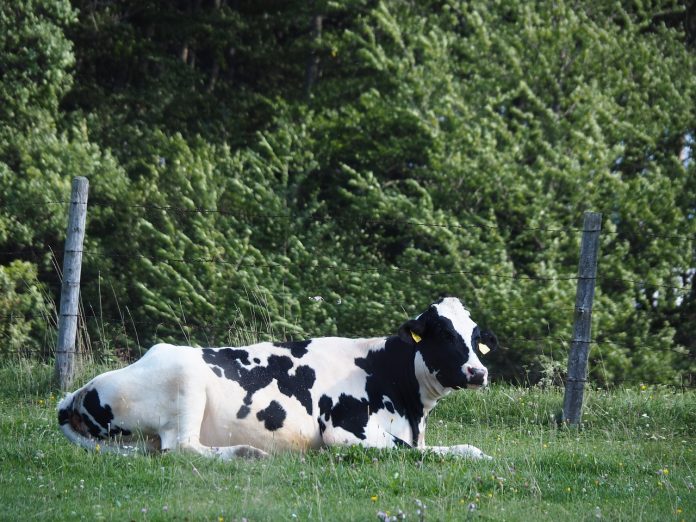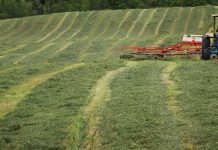The value of a dairy cow depends on her ability to become pregnant and renew her lactation cycle.
Although management plays a large role in reproductive success through accurate heat detection and proper insemination techniques, other environmental factors and cow characteristics can also influence reproductive success.
Mastitis
One potential factor is mastitis.
Recently, we reviewed nearly 30 previously published studies to evaluate if there is evidence of reduced reproductive performance in cows that have mastitis.
By combining results from multiple studies, we can more accurately conclude if the relationship between mastitis and reproductive performance is real.
The reproductive performance measures reported in the studies we looked at included the time (number of days) to first service, days open, services per conception, first service conception rate, and pregnancy loss.
By combining results from all studies, we found that, on average, a cow that experiences mastitis will have increased days to first service, days open, services per conception, and pregnancy loss while having a reduced first service conception rate.
Cases
We were also curious how different cow, farm, and mastitis case factors might influence this relationship.
Mastitis cases occurring after first service had a reduced effect on time to first service compared to cases occurring any time around first service while mastitis cases occurring pre-insemination leading to conception had a reduced effect on days open and services per conception compared to cases occurring any time around the insemination leading to conception.
Additionally, clinical mastitis cases had a larger effect on days open than subclinical mastitis cases.
Explanation
How do we explain this? Although many researchers have looked into how mastitis reduces reproductive performance, a complete understanding is still lacking.
Still, some possible explanations exist. Just like other diseases, mastitis causes an immune response that increases both the body temperature and pro-inflammatory cytokine production.
An increased body temperature could reduce embryo survival, similar to heat stress.
Alternatively, the increased cytokines could disrupt normal hormone levels, negatively affect the reproductive cycle, and impair embryonic development.
Further research is needed to fully understand how this relationship works and, potentially, how we can influence the outcome.
On-farm application
So what should you do with this information? First, this study highlights the negative economic impact of mastitis, beyond reduced milk production.
By better understanding the full cost of mastitis, it is easier to understand when investing in mastitis prevention strategies will be economically beneficial.
Second, you can use this information to selectively manage cows who have had mastitis.
By using synchronization protocols or other alternative breeding strategies, farmers may have more success breeding cows that have experienced mastitis.
Finally, as research moves forward we may be able to better define what types of mastitis cases have the greatest impact on reproductive performance and which herds or specific cows are most susceptible to reduced reproductive performance following a mastitis case.













